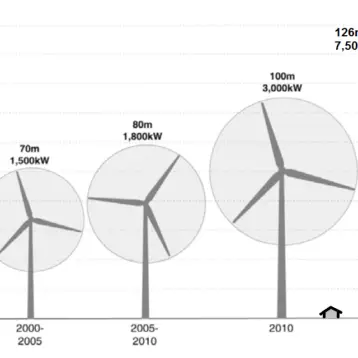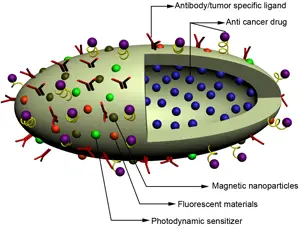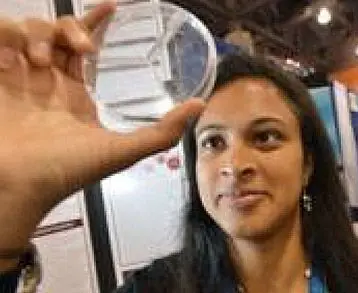|
Sandia researchers Xinjian Zhou, Francois Leonard, Andy Vance, Karen Krafcik, Tom Zifer, and Bryan Wong used the human retina as a model for their nanotube design. When light strikes the retina, it triggers chemical and electrical impulses that in turn trigger nerve impulses which provide the signal interpreted by the brain. The Sandia detector uses three different types of chromophores – one that undergoes a conformational change (change of shape) under red light, one that undergoes one under blue light, and one that deforms under green light. These shape changes cause a shift on a transistor made from a single-walled carbon nanotube. Just as the nerve impulse provides the actual signal to the human brain, the transistor generates electrical signals that can be detected and interpreted by scientists.
Prior to this new design, nanotubes could only detect high intensity light in very narrow wavelength ranges. In addition to greatly expanding the range of detection, the Sandia nanotubes were shown to detect significantly weaker light sources. In fact, at about 40W/m2, they are comparable to most digital cameras in production today.
The first step in creating the device was creating a transistor made from a single carbon nanotube. The nanotube was deposited on a silicon wafer and photolithography was used to define patterns for contacts. While it does take a couple of days to create each transistor, production techniques used for other carbon nanotube technologies should help researchers speed the process up considerably. The transistor is lowered into a dye containing the chromophores, which attach themselves to the nanotube after just a few minutes, self-assembling into the finished detector.
The researchers say that the next steps include an expansion of the detection range into infrared wavelengths and creating a nanoscale photovoltaic device.
TFOT has previously reported on a variety of other carbon nanotube advances and applications including the world’s first carbon nanotube-based color active matrix electrophoretic display (EPD) e-paper, carbon nanotubes used as ultra-sensitive chemical sensors, the world’s smallest radio built around a carbon nanotube core, and loudspeakers made from flexible and transparent nanotubes.
Read more about the carbon nanotube research at Sandia National Lab in a recent press release or read the abstract of the paper recently published in Nano Letters.
Icon image: A diagram representing chromophores attaching to a transistor made from a single carbon nanotube (Credit: Randy Wong/Sandia National Laboratory)










